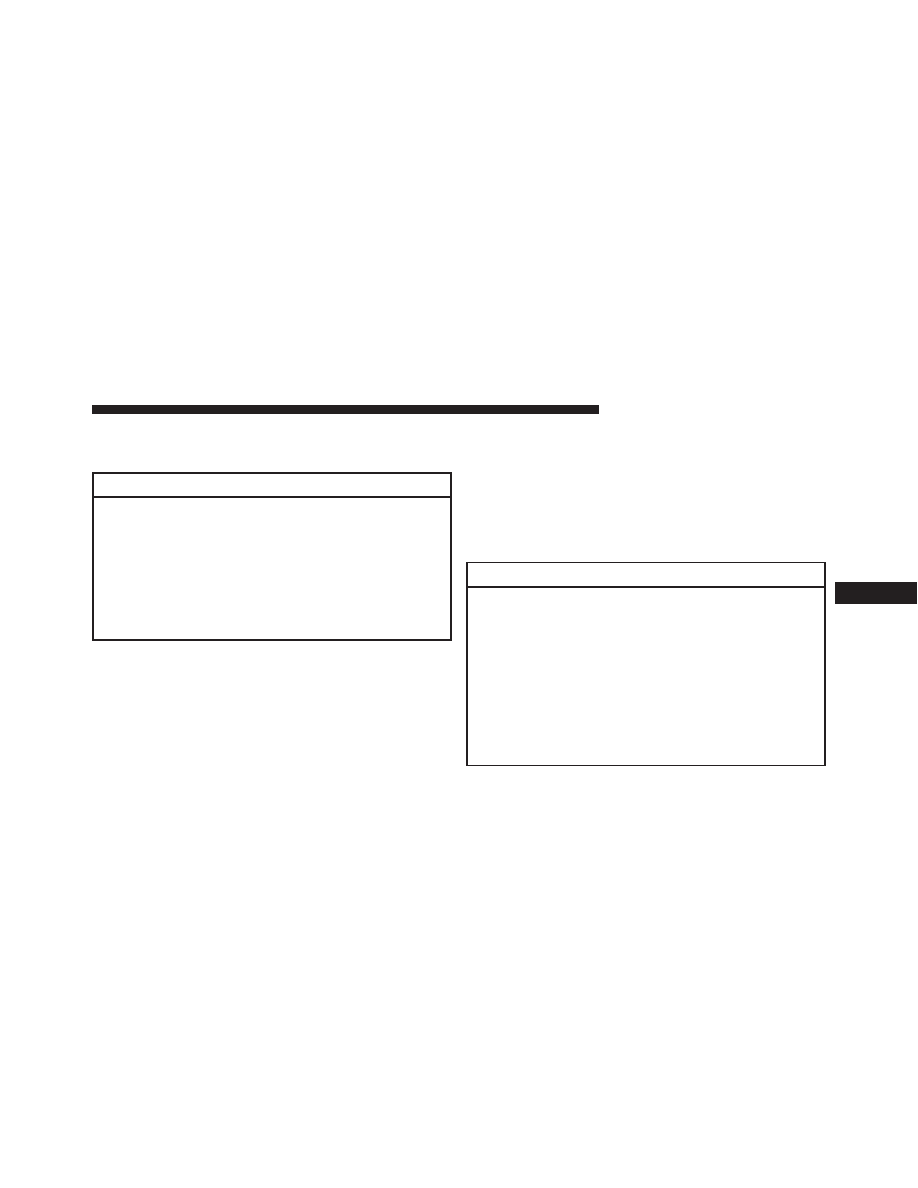Peugeot 4C (2015 year). Instruction - part 16

that will maintain the rocking motion, without spinning
the wheels or racing the engine.
CAUTION!
Racing the engine or spinning the wheels may lead to
transmission overheating and failure. Allow the en-
gine to idle with the transmission in NEUTRAL for at
least one minute after every five rocking-motion
cycles. This will minimize overheating and reduce
the risk of transmission failure during prolonged
efforts to free a stuck vehicle.
NOTE:
To turn the ESC off, move the selector from the
Normal position to the Dynamic position and hold it for
a few moments. The Race configuration will be set when
the graph of the longitudinal and transversal G accelera-
tions is shown in the instrument panel. At this time the
ESC has been turned off. Once the vehicle has been freed,
The selector may be moved back to the desired mode.
CAUTION!
• When “rocking” a stuck vehicle by shifting be-
tween DRIVE and REVERSE, do not spin the
wheels faster than 15 mph (24 km/h), or drivetrain
damage may result.
• Revving the engine or spinning the wheels too fast
may lead to transmission overheating and failure.
It can also damage the tires. Do not spin the wheels
above 30 mph (48 km/h) while in gear (no trans-
mission shifting occurring).
6
WHAT TO DO IN EMERGENCIES
239